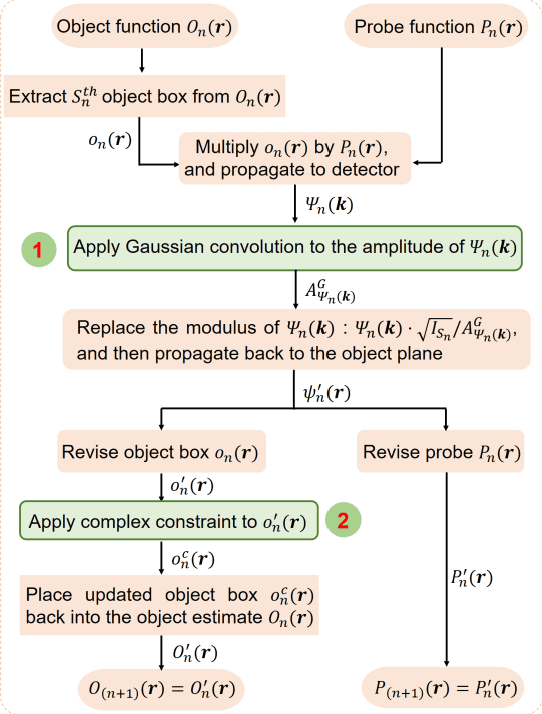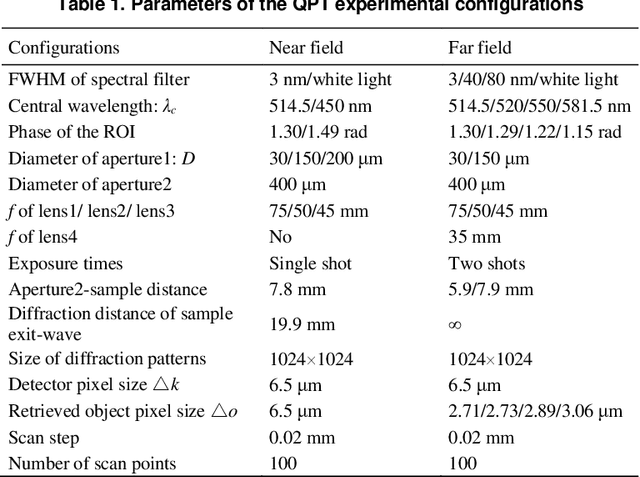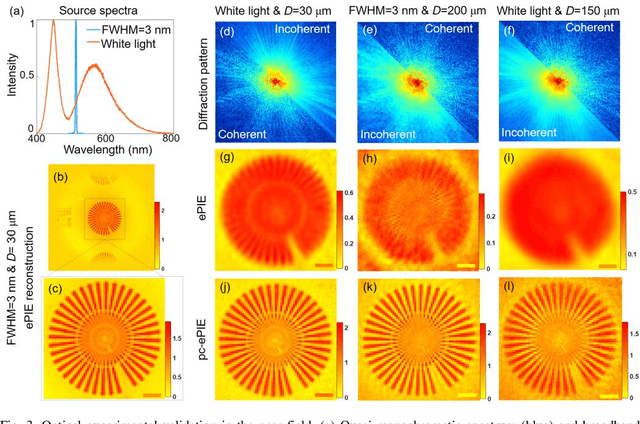Huixiang Lin
A high-performance reconstruction method for partially coherent ptychography
Jun 09, 2024



Abstract:Ptychography is now integrated as a tool in mainstream microscopy allowing quantitative and high-resolution imaging capabilities over a wide field of view. However, its ultimate performance is inevitably limited by the available coherent flux when implemented using electrons or laboratory X-ray sources. We present a universal reconstruction algorithm with high tolerance to low coherence for both far-field and near-field ptychography. The approach is practical for partial temporal and spatial coherence and requires no prior knowledge of the source properties. Our initial visible-light and electron data show that the method can dramatically improve the reconstruction quality and accelerate the convergence rate of the reconstruction. The approach also integrates well into existing ptychographic engines. It can also improve mixed-state and numerical monochromatisation methods, requiring a smaller number of coherent modes or lower dimensionality of Krylov subspace while providing more stable and faster convergence. We propose that this approach could have significant impact on ptychography of weakly scattering samples.
Broadband ptychographic imaging of biological samples using a deconvolution algorithm
Nov 03, 2023Abstract:Ptychography is an attractive advance of coherent diffraction imaging (CDI), which can provide high lateral resolution and wide field of view. The theoretical resolution of ptychography is dose-limited, therefore making ptychography workable with a broadband source will be highly beneficial. However, broad spectra of light source conflict with the high coherence assumption in CDI that the current reconstruction algorithm were built upon. In this paper, we demonstrated that incorporation of a blind deconvolution in the reconstruction algorithm can improve the image quality of ptychography with broadband source. This broadband reconstruction algorithm can obtain high-quality amplitude and phase images of complex-valued samples requiring no knowledge of the illumination spectrum. Optical experiments using biological samples demonstrate the effectiveness of our method. The significant improvement in low coherence tolerance by our approach can pave the way for implementing ultrafast imaging with femtosecond or attosecond lasers or high-flux ptychographic imaging with laboratory EUV or X-ray sources.
 Add to Chrome
Add to Chrome Add to Firefox
Add to Firefox Add to Edge
Add to Edge